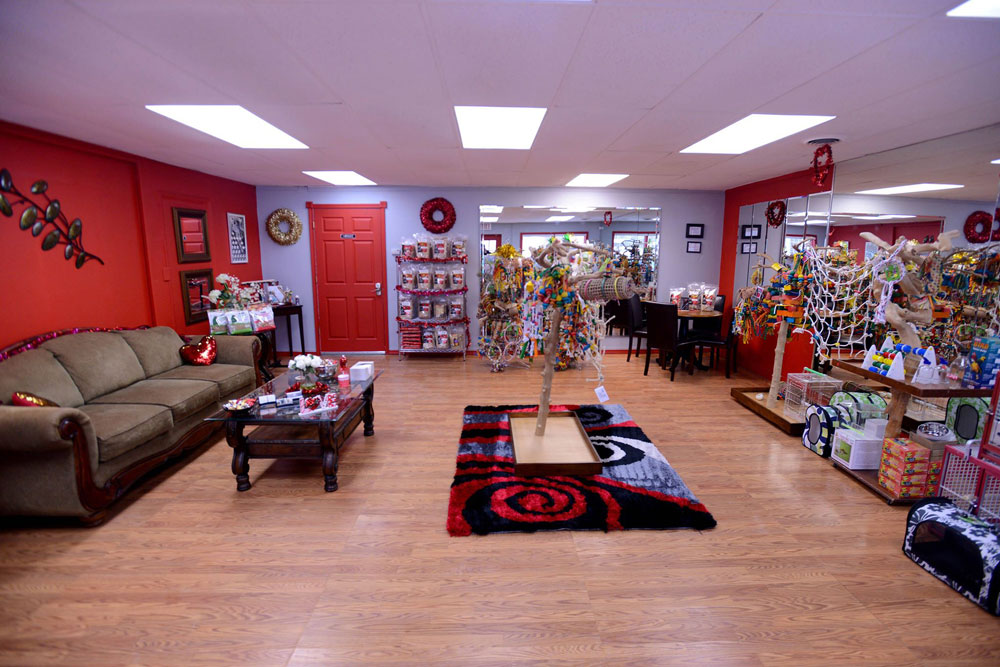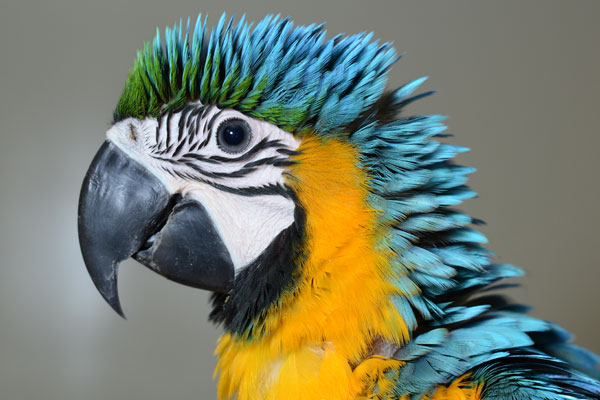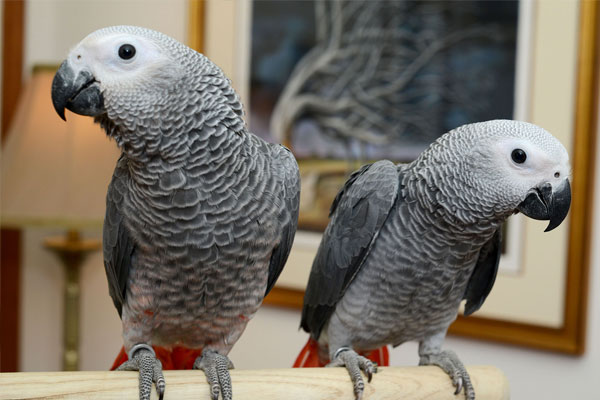In unserem Geschäft möchten wir keinem Kunden einen Vogel verkaufen.
Wenn jemand sagt, dass er einen grünen Vogel haben möchte, wissen wir, dass diese Person wahrscheinlich nicht recherchiert hat, was es braucht, um einen Vogel zu besitzen. Wir würden ihnen empfehlen, Online-Recherchen durchzuführen, bei denen wir die Unterschiede anhand ihrer Erfahrung und ihres Verständnisses für die Verantwortung beim Besitz eines Vogels erklären können. Wir versuchen dann, einen Vogel an seinen Lebensstil anzupassen.
Wenn jemand einen Vogel kauft, suchen wir anhand von Feedback nach Indikatoren, um den perfekten Vogel mit seinem neuen potenziellen Besitzer zusammenzubringen. Zum Beispiel hatten wir einmal ein Elternteil, das seinem 13-jährigen Mädchen einen 4-jährigen Blue & Gold Macaw kaufen wollte, aber das Mädchen hatte Angst davor! Auf keinen Fall würden wir diesen Verkauf zulassen. Alternativ passte ein Jenday Conure besser.
Sie wissen es vielleicht nicht, aber Sie werden interviewt, wenn Sie mit Ihrem potenziellen neuen Vogel zusammensitzen. Wir waren Pioniere bei der Idee eines Parrot Boutique Shops; eine Abkehr von bekannteren Haustier-Supermärkten. Wir geben jedem Kunden sein ganz individuelles Erlebnis. Passende Käfiggrößen, Spielzeug und Futter für die Art des Haustieres. Alles an einem praktischen Ort!
„Unser Ziel ist es, die ideale Ergänzung für Ihre Familie zu finden, an der Sie jahrelang, wenn nicht sogar jahrzehntelang Freude haben werden. Mit unserem einzigartigen, vogelzentrierten Ansatz streben wir danach, das beste Erlebnis in der Branche zu bieten.“ – Anna

Über unseren Standort und unser Geschäft


Wir lieben unsere Vögel




We’ve bred many species over the years. My first breeding pair were Sun Conures. They weren’t bought as a breeding pair, but nature took over. They kept laying on the bottom of their cage, so I bought them a nest box and within 2-months, I heard squeaking in their nest box. I looked in and I saw four bobbing heads looking up at me! I bought two more pairs of breeders that were not tame or interested in any human interaction, and they were all prolific. I started to hold back the super red ones and the high yellows and crossed them into each other to create big, bright, healthy birds. From Suns, I started to breed Senegals, and then Pionus-sized birds. Within two years, I had already moved into Amazons.
By 2011, people were calling daily looking for African Greys. I bought several pairs and they didn’t breed or show interest in breeding. After two years of trial and error, I had my first clutch! This was followed by other pairs going to nest within the same month, and more than half of them being fertile on their first attempt while in my possession. About a year later, most of the pairs had become reliable breeders and I started to expand into African Greys, because their needs were not the same as the other birds I had in my aviary. By 2015, I had also learned how to pair and repair birds by looking for subtle cues of what a bird will tolerate and what it prefers.
Now, I’ve taken the time to work with endangered species while trading with other Federally-permitted breeders, to repopulate and enhance the species. Because of this I have had to hire more employees because, unfortunately, there are only 24 hours in a day.
I’ve been doing this for a while, but I’m learning constantly. I’m up at 4am and go to bed at 10pm seven days a week. From the time I wake up to the last feedings of the night, I am with my birds. There is a lot of bad information in books and from word-of-mouth about how to successfully breed. In my opinion, it’s learning your own birds and putting in the time to learn the process. Many times, what someone thinks will create an ideal breeding environment is actually counterproductive. Specifically, why do some pairs not breed for years? There is always a reason. It’s up to the breeder to figure it out.
VON UNSEREN KUNDEN



